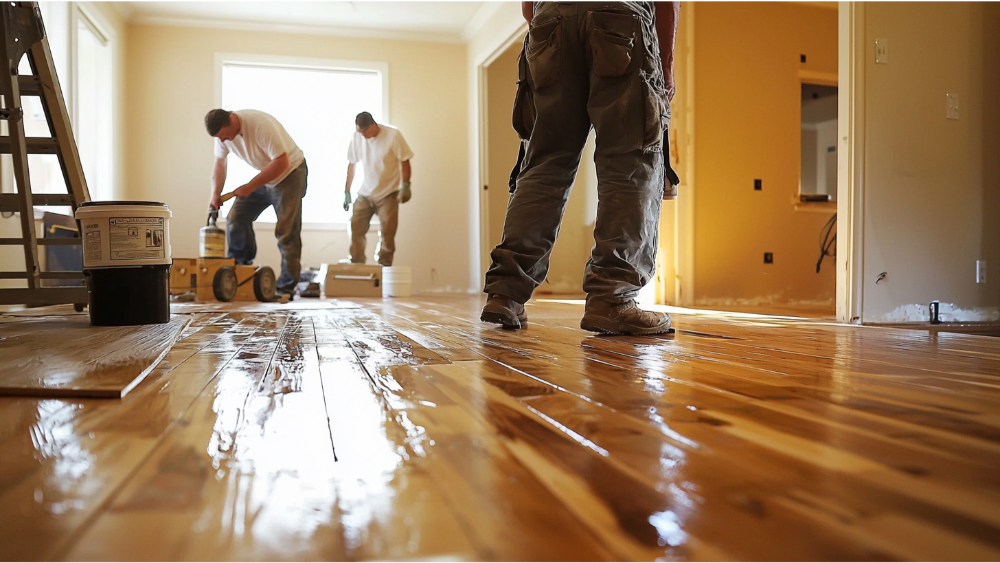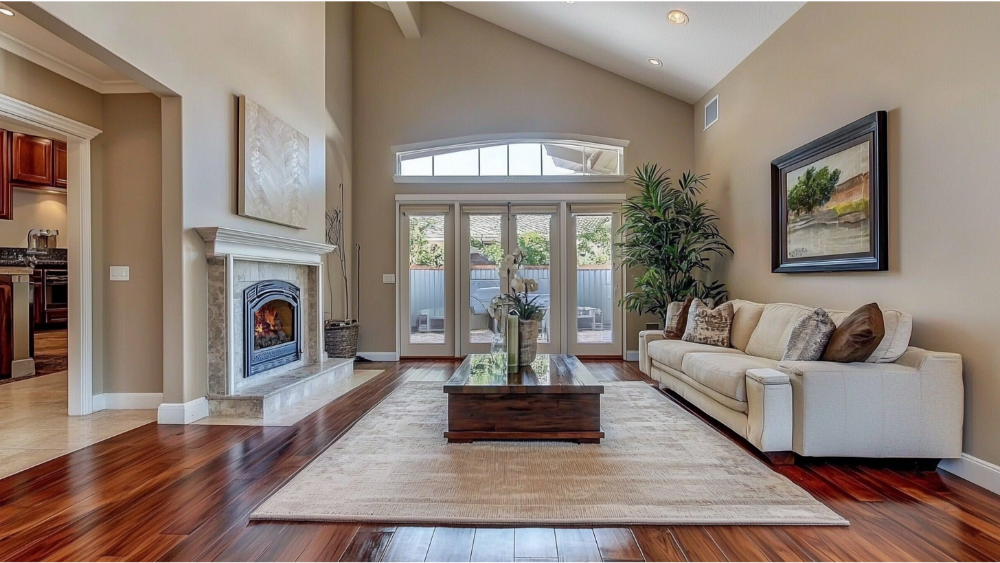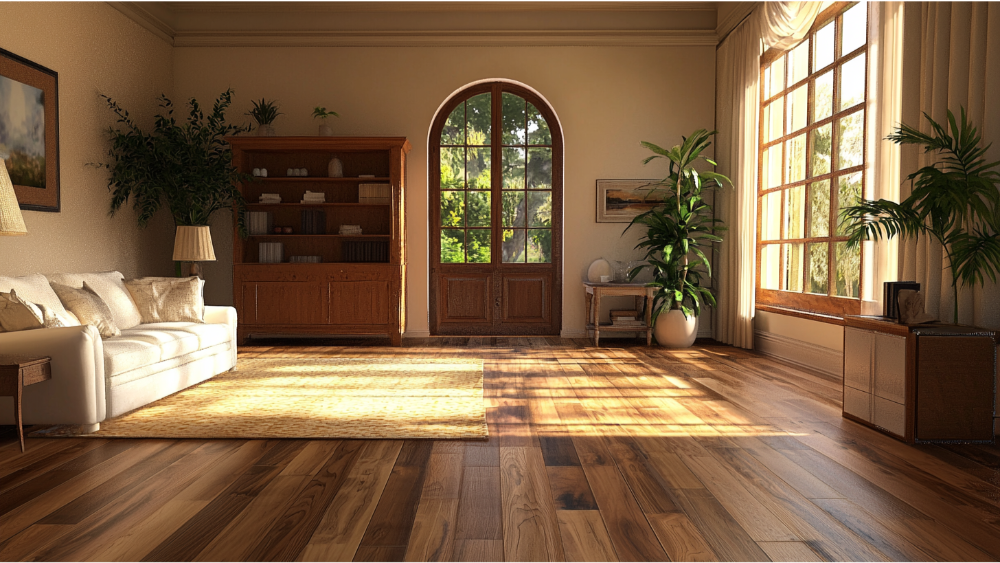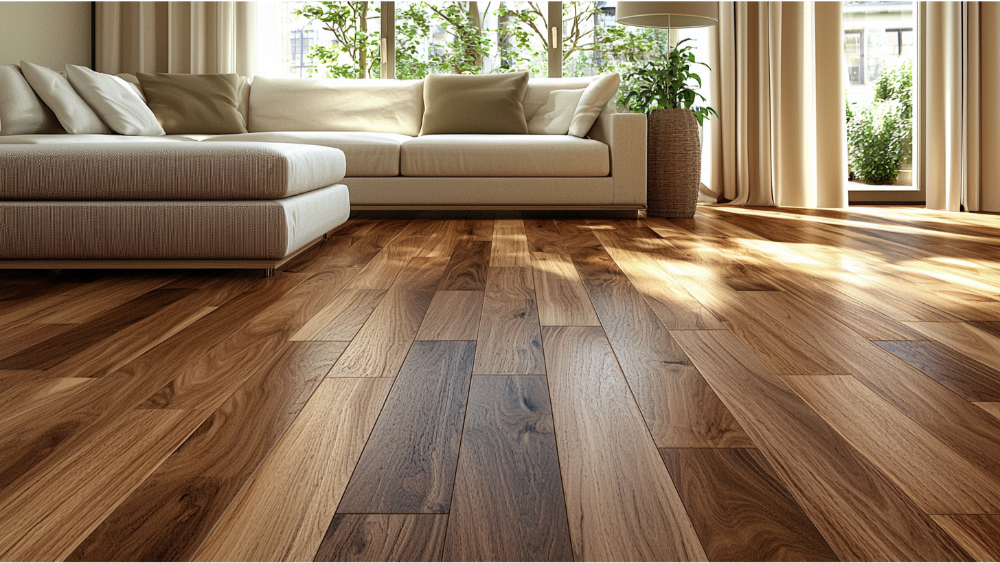Why Timing Matters When Refinishing Hardwood Floors
Refinishing your hardwood floors is one of the most effective ways to restore their beauty and protect your investment. But if you’re like most homeowners in the Seattle or Bellevue area, you’ve probably asked, “How long does it take to refinish hardwood floors?” Knowing the project timeline helps you plan ahead—especially when you’re balancing a busy schedule, kids, pets, and furniture logistics.
We get this question every day at Best Floor Coverings. And the truth is, the refinishing process typically takes 3 to 7 days, but the actual time frame can vary based on many factors—including the size of your space, the floor condition, your choice of finish, and whether it’s a DIY project or done by hiring professionals.
Average Timeframe to Refinish Hardwood Floors
So, how long does it take from start to finish? Here’s a general breakdown based on square footage and finish type:
| Square Feet | Water-Based Polyurethane | Oil-Based Polyurethane |
|---|---|---|
| Up to 300 sq. ft. | 2–4 days | 4–6 days |
| 300–800 sq. ft. | 3–5 days | 5–7 days |
| 800+ sq. ft. | 5–7+ days | 7–10 days |
The overall project duration will vary based on the variables mentioned above. Whether you’re tackling one room or the entire house, each refinishing project is different.
What Impacts the Refinishing Timeline?

1. Size of the Space
The more square feet of wood floors you’re refinishing, the longer the sanding duration and drying process. A typical room might take just a couple of days, but refinishing floors throughout the entire house could stretch into a full week or more.
2. Floor Condition and Existing Floors
Existing floors in poor shape—think deep gouges, uneven surfaces, or old, stubborn finishes—can add days to your timeline. Older floors may require additional repairs, sub floor patching, and specialized equipment to get the job done right.
3. Type of Finish (Water-Based vs. Oil-Based Finishes)
- Water-based polyurethane dries quickly (2–3 hours per coat) and is ideal for families who need faster access back to their space.
- Oil-based finishes—like traditional oil based poly—take around 24 hours per coat. While oil based polyurethane takes longer to dry and cure, it offers a rich, natural color and enhanced durability.
4. Humidity and Temperature
The climate in Seattle plays a significant role in how fast your floors dry. Higher humidity slows down the drying process. Proper use of air conditioning, fans, and dehumidifiers can help manage the project duration.
5. DIY Project vs. Hiring Professionals
A DIY project might sound like a way to save money, but it often becomes more time-consuming due to steep learning curves and limited access to specialized equipment. On the other hand, hiring professionals like Best Floor Coverings ensures efficient work with high-end tools and strict adherence to the manufacturer’s instructions.
Step-by-Step Timeline: What to Expect Each Day

Day 1 – Prep and Floor Sanding Begins
We begin by clearing out furniture, laying down plastic sheeting, and setting up dust barriers to control dust spread. Next comes the floor sanding, which includes the use of a drum sander for large areas and an edge sander for corners and perimeter work.
Our goal here is to remove the old finish and expose bare wood, creating a smooth surface for staining or sealing. Depending on the size of the sanding project, this may take one full day or more.
Day 2 – Detailed Sanding and Subfloor Repairs
Once the heavy sanding is complete, we go over the floors again using finer grits. This step ensures an even finish and prepares the surface for staining or sealing. We’ll also address any sub floor issues—like squeaks or dips—to ensure your new hardwood flooring wears evenly over time.
Day 3 – Apply Stain (Optional)
Want to change your floor color? This is when we apply stain. You can choose a darker stain for a bold, modern look or go with a lighter, natural color to brighten up your space.
- Water-based stain: dries in 4–6 hours
- Oil-based stain: needs 12–24 hours to fully dry
Your wood type or wood species also impacts how the stain looks. For example, red oak takes stain differently than other woods like maple or walnut.
Day 4–5 – Sealing with Water-Based or Oil-Based Polyurethane
Next, we apply multiple coats of polyurethane. Typically, we recommend a few coats to ensure lasting protection.
- Water based poly dries fast and has lower VOCs
- Oil based polyurethane provides a warm, amber tone but needs more drying time
- Oil based poly also adds depth and richness, enhancing grain patterns and giving that classic hardwood finish
Each coat must dry thoroughly before the next is added. Drying time will depend on humidity, airflow, and the product used.
Day 6–7 – Curing the Final Coat and Move-Back Timeline
Once the final coat is on, your floors begin curing. This is a critical phase in the refinishing process.
- Water based polyurethane cures in 7–14 days
- Oil based polyurethane takes 14–30 days to fully cure
- You can walk in socks after 24–48 hours
- Furniture can be returned after 3–5 days
- Wait 1–2 weeks before laying rugs (or 3–4 weeks for oil-based finishes)
Proper care during this time ensures the finish sets properly and protects your floors for years to come.
Choosing Between Water-Based and Oil-Based: Which Is Faster?
If speed is your top priority, water-based polyurethane is the winner. It dries faster, smells less, and is easier to work with in humid conditions. However, oil based finishes provide better depth of color and tend to be more durable over time.
Your choice may also depend on your wood species, your lifestyle, and your sensitivity to odors or VOCs.
We’ll help you compare all the options and pick the best route for your refinishing project.
When Is the Best Time of Year to Refinish Hardwood Floors?

The best season for refinishing hardwood floors or tackling hardwood floor installation in the Seattle area is spring through early fall. That’s when humidity levels are lower and air circulation is easier to manage.
If you’re refinishing in winter, we’ll use air conditioning, fans, or heaters to help control temperature and moisture and stay on schedule.
Planning to upgrade from laminate flooring to real wood floors? We’ll coordinate your new hardwood flooring install with your refinishing timeline to keep everything seamless.
Should You Stay Home During the Refinishing Process?
This depends on your sensitivity to fumes and how much of your home is being worked on. If you’re only refinishing one room, staying home might be no problem. But if the same area includes bedrooms or high-traffic zones, or you’re doing the entire house, it might be more comfortable to stay elsewhere for a few days—especially if you’re using oil based poly.
Our dustless sanding and low-VOC options make staying home easier than ever, but we’ll walk you through your best options during the planning phase.
How Best Floor Coverings Makes Floor Refinishing Faster, Cleaner, and Better
We understand that refinishing floors can feel overwhelming. That’s why we make the process as smooth as possible. With our specialized equipment, dust containment systems, and expert crews, we take care of every detail from start to finish.
Unlike other companies that subcontract or leave you guessing, we manage your entire refinishing project in-house—so you get consistent communication, top-tier craftsmanship, and results that last.
Check out our hardwood refinishing services and see why homeowners across Kirkland, Bellevue, and the greater Seattle area trust us with their wood floors.
Frequently Asked How Long Does It Take to Refinish Hardwood Floors Questions

Can you walk on floors during refinishing?
Not during the sanding process or coating. You can usually walk on the bare wood in socks 24–48 hours after the final coat dries.
How long before I can move furniture back?
You’ll want to wait 3–5 days before moving furniture back in—longer if you’re using oil based finishes.
What’s the difference between drying and curing?
Drying is when the finish feels dry to the touch. Curing is the chemical hardening process. For water based poly, curing takes about 1–2 weeks. For oil based poly, it could take 2–4 weeks.
Can I refinish engineered hardwood?
It depends on the thickness of the wear layer. If it’s thick enough, you can refinish hardwood once or twice. If not, it may be time to consider new hardwood flooring.
What are the signs my floors need refinishing?
If you notice scratches, dullness, or finish that no longer repels water, it’s time. Some floors only need a screen-and-recoat, while others require a full refinishing process.
Final Thoughts: Plan Ahead and Refinish with Confidence
Refinishing your hardwood floors is one of the smartest ways to revitalize your home. Whether you’re refreshing existing floors, switching up your floor color, or upgrading from laminate flooring, knowing your project timeline helps eliminate surprises.
With our expert guidance, modern tools, and clear communication, your refinishing project will be stress-free and beautifully done.
Ready to Refinish Hardwood Floors in the Seattle Area?
We bring the showroom to you, manage the sanding project, help you choose between oil based finishes and water based polyurethane, and handle every step with care. Let’s transform your wood floors—on your schedule and within your budget.
👉 Schedule your free in-home consultation or call (425) 505-9787 to get started.




